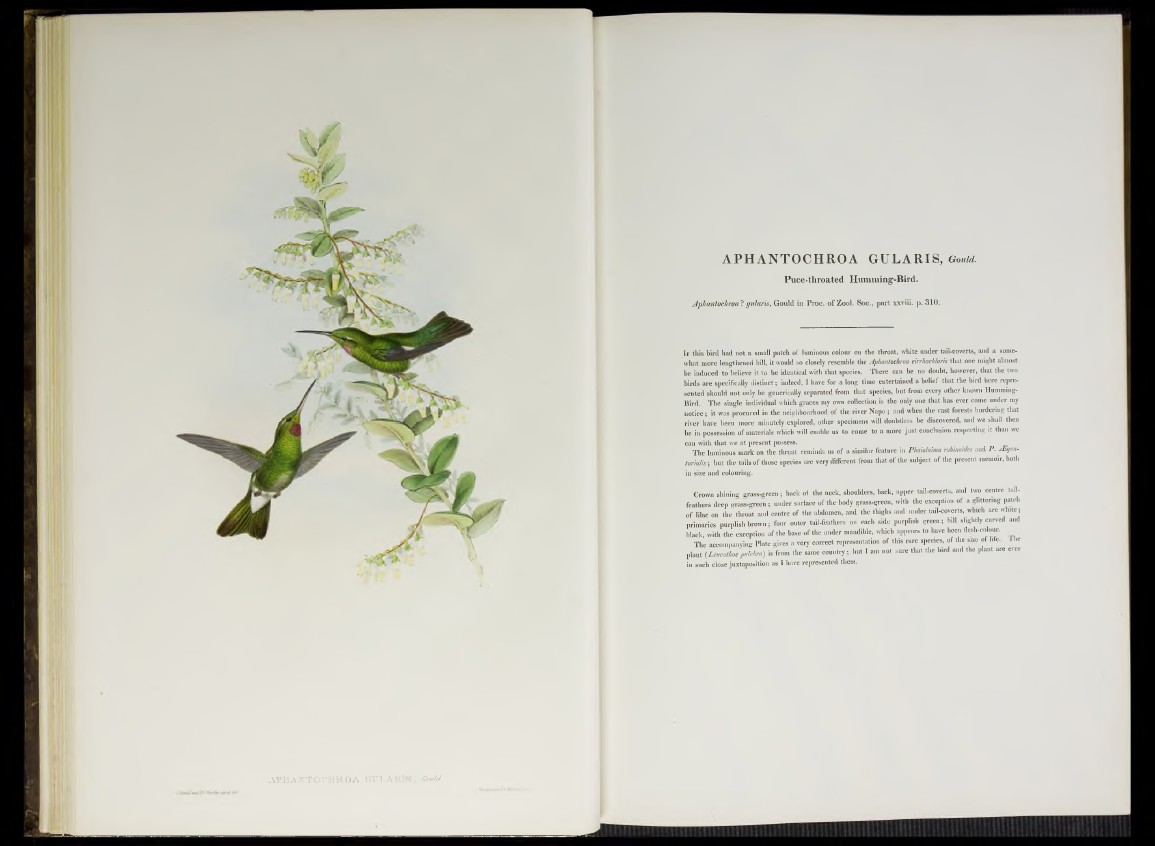
AFHAWTOraiRO'A GÜLARIS, GouM.
APHANTOCHROA GULARIS, Gould.
Puce-throated Humming'-Bird.
Aphantochroa ? gularis, Gould in Proc. of Zool. Soc., part xxviii. p. 310.
Ir this bird had not a small patch of luminous colour on the throat, white under tail-coverts, and a some-
what more lengthened bill, itwould so closely resemhle the Aphantochroa cirrhochloris that one might almost
he induced to believe it to be identical with that species. There can be no doubt, however, that the two
birds are specifically distinct; indeed, I have for a long time entertained a belief that the bird here repre-
sented should not only be generically separated from that species, but from every other known Humming-
Bird. The single individual which graces my own collection is the only one that has ever come under my
notice ; it was procured in the neighbourhood of the river Napo ; and when the vast forests bordering that
river have been more minutely explored, other specimens will doubtless be discovered, and we shall then
be in possession of materials which will enable us to come to a more just conclusion respecting it than we
can with that we at present possess.
The luminous mark on the throat reminds us of a similar feature in Phaiolaima rahinoides and P. JEqrn-
torialïs; but the tails of those species are very different from that of the subject of the present memoir, both
in size and colouring.
Crown shining grass-green; back of the neck, shoulders, back, upper tail-coverts, and two centre tail-
feathers deep grass-green ; under surface of the body grass-green, with the exception of a glittering patch
of lilac on the throat and centre of the abdomen, and the thighs and under tail-coverts, which are white ;
primaries purplish brown; four outer tail-feathers on each side purplish green; bill shghtly curved and
black, with the exception of the base of the under mandible, which appears to have been ffesh-colour.
The aceompanying Plate gives a very correct representation of this rare species, of the sise of life. he
plant (Leacothocpolchra) is from the same country; but I am not sure that the bird and the plant are ever
in such close juxtaposition as I have represented tliem.